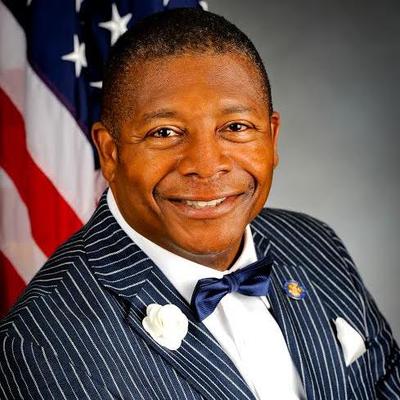New York City and state are getting closer to their respective goals of awarding 30% of their contracts to minority women-owned business enterprises. That begs the question, what comes next?
In the past year, state lawmakers renewed and expanded the Empire State’s MWBE program, while also passing legislation that allows New York City to do the same. Reaching those 30% benchmarks, however, does not mean that city and state officials are satisfied with the results of their MWBEs programs. Much remains to be done at both the city and state levels – and the upcoming year offers them a chance to make substantial progress.
Here is what four top city and state officials have to say about what got done in 2019 and what is on the 2020 agenda. The interviews have been edited for length and clarity.
Rodneyse Bichotte

Chairwoman, Assembly Subcommittee on Oversight of Minority and Women-Owned Business Enterprises
What got accomplished this past legislative session on MWBEs?
There was the extension of Article 15, (which authorizes the state MWBE program). We also got an expanded New York City MWBE program, and we passed a bill to approve a pilot mentor program in the Dormitory Authority of the state of New York. In New York City, we addressed increasing the threshold to $500,000 on contracts that are exempt from a formal procurement process and the Department of Design and Construction also now has a mentorship capacity program. We also lifted the personal net worth cap on MWBE owners to $15 million. This will give smaller MWBEs an opportunity to get higher revenue, which in turn will allow them to do bigger jobs in the future.
Are there other ways that smaller MWBEs are gaining a competitive edge?
Things like bid credits were huge. A lot of times when the state is looking for what is the best bid, they look for the lowest competitive bid. But MWBEs are typically smaller, and they provide a different type of value: hiring minorities and women, being able to create jobs in their communities, building wealth and all that stuff. Because they are smaller scale, they don’t have the opportunity to take advantage of economies of scale. When you’re a larger company, you can, for example, buy a whole bunch of supplies at a cheaper rate. MWBEs can’t do that. So their costs are typically a little bit higher. Now when MWBEs are bidding, there’s a 10% bid credit.
Does that mean they can be 10% more expensive?
Yes.
How about the certification process?
The problem at the state level was it took forever to get certified. So we expanded the time that you’re certified from three years to five years. That way there’s not a backlog of people renewing. The second thing is we gave Empire State Development 21 days to respond to an applicant on anything that is wrong with an application. Once everything is submitted, it should not take more than 45 days to get a completed certification.
Most of the conversation about MWBEs is either about the state or New York City. What about other cities?
Schenectady and Buffalo are two cities that have been active in terms of having some form of an MWBE program. They’re nothing like New York City, obviously. But they have mentorship and some technical service. It’s not as formal and as comprehensive as the New York City program.
James Sanders

Chairman, state Senate Committee on Banks
What’s the big picture with promoting MWBEs?
The beauty of MWBEs is that it speaks to what is America. This is merely saying: “Yes, you guys are far behind, but as of this moment, we will start acting in a fair fashion.” New York City is a majority-minority city. If you take the populations of people of color and women, that’s a good 70% of the population. Yet, we’re only talking about that 30% of the contracts.
LGBTQ people might also need a boost in government contracts, what about adding them to the existing MWBE program?
The MWBE program is a federally designated program. You just can’t jump up and add whoever you wish. For example, I am a veteran. I actually am a disabled veteran, but one step at a time. You cannot put veterans in this program – not even disabled veterans – because they are not one of the protected classes as designed by the federal government. You cannot add disabled vets as much as we all love them. It’s a federal program and so the argument over LGBTQ and others is apples and oranges.
So what is coming up in the state Senate on MWBEs next year?
We are going to try some stuff around insurance. You have owner-controlled insurance programs. It is a policy held by a property owner during the construction that covers all liability and loss arising from a project. So the owner takes the insurance on the whole project – think of it that way. That is one of the problems that we’re going to tackle.
A greater problem is access to capital that we asked to look at (in) New York and find out why we’re trailing so many other states. Take JFK Airport. There are few MWBEs that can compete at the level that the contracts require. This is after we’ve had these programs for many years. So we need to have an overhaul of the entire program.
How would you compare the New York City and state MWBE programs, considering your experience at both levels?
We put more things in the city for judging success, compared to the state. It’s a comparison of apples and oranges. At the state level, we did a disparity study and that proves there’s a problem. From there, you can come up with remedies based on those problems. And you have got to have more transparency.
Johnathan Smith

Deputy Secretary for Civil Rights in the Office of the Governor
So how is the state doing on reaching its 30% goal with MWBEs?
The 30% goal is really looking at the total contracting opportunities across New York state agencies and authorities and making sure that MWBEs are being utilized appropriately according to their availability across the state. We are at 29.13% – less than 1% away from the governor’s 30% goal.
So hypothetically, if the state spent $1 billion on contracts, $300 million of that should go to MWBEs, is that how that 30% works?
Exactly.
How is the state tailoring its outreach to different industries to better boost MWBE participation?
The state MWBE division held a number of expos and town halls in every region of the state to hear from local MWBE firms, to hear from local businesses, to hear from local stakeholders about what they need to succeed with contracting opportunities. What we’re going to do over the next year is take the lessons from those conversations and think about how we are tailoring our programming to meet the specific needs of different industries and regions across New York state.
Got any specific examples?
One of the things that we heard from MWBEs was how could we make the certification process or the recertification process as accessible and as transparent as possible. We changed the recertification period from three years to five years. We’ve also made changes to the certification process to make it more transparent, and we reduced the amount of paperwork that a firm has to provide in that process. We have a number of growing and developing industries across the state, particularly in the information technology area. We’ve learned to have industry-specific opportunities and resources – in technical assistance, for example.
What are the chances that the governor will call for a 40% goal next year now that the 30% goal has nearly been met?
We will be conducting a disparity study in the upcoming year. That will be the key factor in forming what the program should look like going forward. Right now our focus is on growing from where we are – 29.13% is not 30%. We have much more work to do.
Jonnel Doris

Senior Adviser and Director of the New York City Mayor’s Office of Minority and Women-Owned Businesses
How’s the city been doing on MWBEs in the past year?
We haven’t released fully all of our numbers for the last fiscal year. We have increased the number of our firms to help address the 30% goal. We have hit that big target of 9,000 firms certified. So we have the firms. We have the available capacity to perform the work. We’re also doing better than we reported last time on utilization. So we’re moving in the right direction.
The city bases its 30% goal on the projected value of a contract, but New York City Comptroller Scott Stringer says this overstates the use of MWBEs. Why use that metric rather than actual spending?
I think a better representation of what the city is currently doing is to count the contracts that we are ultimately responsible for as a city. Every contract that we count has been registered by the comptroller, so there’s no ambiguity with our numbers. Numbers are straightforward. It gives credibility to our numbers that these are actually the amounts that MWBEs are actually winning, and that’s why we report on it the way we report on it.
A lot happened on MWBEs this year in the state Legislature, did you get what you were looking for?
We got authorization for mentorship programs for construction, particularly around construction services – that is at the city Department of Design and Construction. We’re beginning to work through building that out and going through the authorization that we just received. Secondly, the Legislature increased the city’s discretionary spending cap from $150,000 to $500,000, on par with what the state is doing. The last piece that we were able to get was a prequalify list. MWBEs have to be qualified (and) they have to have the ability and capacity to do the work, but these tools are critical to helping us advance the program.
What do you want from the state Legislature next year?
The one thing that our firms face are really issues around insurance. We did request last year from the state an owner-controlled insurance program, which the city cannot do at the moment based upon the local municipal law and state finance law. There is also a contractor-controlled insurance program. Those are two insurance programs that the state is using on some of its projects that we would like the same authority for the city to use.
This post has been updated to include Johnathan Smith and Jonnel Doris.
NEXT STORY: This week’s biggest Winners & Losers


